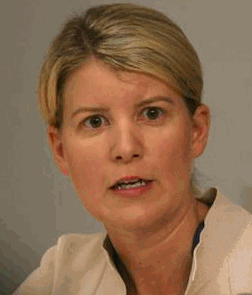|
News & Views item - October 2007 |
Australian Democrats Publish Higher Education Policy: "Education is an
investment not a cost" (October 26, 2007)
Yesterday Senator Natasha Stott Despoja, Australian Democrats spokeswoman for higher education launched the party's higher education policy.
 |
|
Natasha
Stott Despoja |
The policy outlines five key objectives:
Abolish full-fee degrees for domestic students.
Move to abolish HECS and immediately raise the HECS repayment threshold to average male earnings.
Increase student income support.
Repeal Voluntary Student Unionism legislation.
Redress the inadequate funding of universities.
Full-fee degrees are seen as a de facto discriminatory. It is seen to be used as a method of augmenting inadequate public funding as well as a dumbing-down of the student body. The Democrats argue for a corresponding increase in base finding.
They also argue that HECS should should be progressively reduced and eventually abolished with public funding to make up the deficit.
In an effort to increase the affordability of university education the Democrats propose the the age of independence should be lowered to 18, government scholarships be made tax-free, and student income support be coupled to the Henderson Poverty Line.
The Democrats also argue that the introduction of voluntary student unionism has in fact diminished the university experience because of the reduction or elimination of services and functions that added to making attending university a fulfilling experience.
And finally Senator Stott Despoja said the universities should be provided with an immediate injection of a $2 billion grant over four years "for deferred maintenance, to address years of under-funding," and the $2 billion must be supplemented by indexing institutional grants to be based "solely on CPI, to ensure Government funding retains its real value."
While Senator Stott Despoja has delivered more of an outline of what is required to redress the decimation perpetrated over the past 11 years rather than a detailed and costed policy statement it is at least a positive and published statement, although it is disappointing that in the five point statement only one refers to the institutions compared to four concerned with the "clients".
Impoverished universities don't make for good seats of learning.
It's also of some interest to look at the figure of $2 billion as the initial grant to deal with "deferred maintenance.
Working from a comment in TFW in September 2003:
In 1992 the then Minister for Employment, Education and Training, Kim Beazley, requested the National Board of Employment, Education and Training (NBEET) to report on Higher Education Research Infrastructure. The Board invited the Boston Consulting Group to assist it in its determination, and in May1993 it forwarded its final report to the Minister.
The Board recommended an immediate increase above the then $342 million dollars provided by the Commonwealth for university research infrastructure of 37%, i.e. an additional $125 million per annum (1991 dollars, consumer price index (1991) = 106.5). In September 2002 the cpi = 142; so in 2002 dollars a simple calculation yields (342+125) / 106.5) x 142 = $623 million dollars per annum, the amount in current dollars that would have been the recommendation for maintaining university research infrastructure of the 1995 university system, i.e. the year the changes were recommended to begin. The year the Coalition assumed government.
[updating the calculation (current CPI= 157.5) we have (342+125) / 106.5 x 157.5 = $691 million dollars per annum.]
It would seem that at the very least we might ask:
Was the recommended increase of $125 million per annum (1991 dollars) seen as the amount needed to prevent further erosion of the universities' research infrastructure? If not, what proportion would have been allocated for improvements beyond merely holding the line?
What were the effects of the Board's recommendations?
Allowing for increases in the demands for research and research training how would that $691 million (2007 dollars) translate to 2007 requirements?
Having moved on 12 years since 1995 what in fact is the current Commonwealth support for university research infrastructure?
In hindsight did the Board and the Boston Consulting Group properly do the job they undertook for the Minister?
Fifteen years have passed since the NBEET review. Will even now these five basic questions be addressed and receive answers from the Coalition, Labor, the Greens and might the Australian Democrats do a bit of hard-headed fingering as well, categorise costing for "deferred maintenance" including revitalising university staffing, and policies for students, so that it gives its political rivals a real kick in the butt, thereby giving meaning to its admonition: If Australia is to meet the economic and social challenges we will face in the future, we will need a highly-educated workforce.
All things considered that one off, four year $2 billion injection hardly looks extravagant.